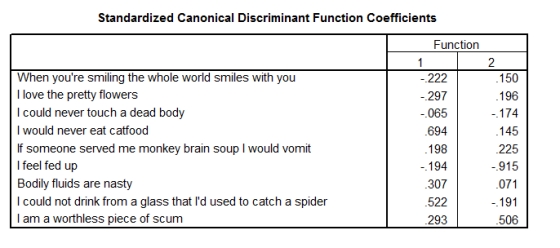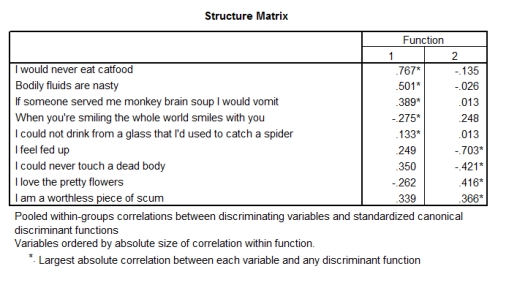A psychologist was interested in gauging the success of a mood manipulation during one of her experiments. She had three groups of participants who underwent different types of mood induction: disgust mood induction, negative mood induction and positive mood induction. After the mood induction, participants were asked to endorse nine statements relating to their mood (on a 5-point Likert scale from 1 = disagree to 5 = agree) .
- A discriminant function analysis was performed on the data. The output is below. Which statement best sums up the results? Eigenvalues
a. First 2 canonical discriminant functions were used in the analysis.


A) There were two significant underlying functions that differentiated the mood induction groups: one seems to reflect disgust, whereas the other reflects depression.
B) There was one significant underlying function that differentiates the mood induction groups: it seems to represent disgust.
C) There were two significant underlying functions that differentiated the mood induction groups, but it's unclear what these functions represent.
D) There were no significant underlying functions that could discriminate the mood induction groups.
Correct Answer:
Verified
Q10: In MANOVA, it can be a good
Q11: A scientist was interested in the success
Q12: Which of the following statements is false?
A)In
Q13: Which of the following sentences is false?
A)The
Q14: A psychologist was interested in gauging the
Q16: The matrix is:
Q17: A scientist was interested in the success
Q18: When you have several outcome variables, what
Q19: A scientist was interested in the
Q20: Cross-products:
A)Represent a total value for the combined
Unlock this Answer For Free Now!
View this answer and more for free by performing one of the following actions

Scan the QR code to install the App and get 2 free unlocks

Unlock quizzes for free by uploading documents